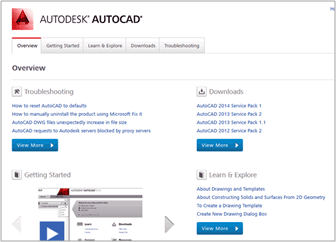 What do you learn when you visit nearly 100 support portals or public knowledge bases (KB) in a short period of time? Here are five observations from just such a recent journey that I took as part of a research project.
What do you learn when you visit nearly 100 support portals or public knowledge bases (KB) in a short period of time? Here are five observations from just such a recent journey that I took as part of a research project.
 The experience mostly sucks. My gut tells me this is becausemost support content portals were not built with the customer in mind; they are simply the internal KB reskinned for public consumption. The KB started as an internal repository to share and archive company knowledge. It was never intended as an external content hub, but morphed into one nonetheless. Some organizations reconfigured better than others and have done a great job of guiding people with intuitive navigation, visual cues and video tours. Dell is one example. The experience mostly sucks. My gut tells me this is becausemost support content portals were not built with the customer in mind; they are simply the internal KB reskinned for public consumption. The KB started as an internal repository to share and archive company knowledge. It was never intended as an external content hub, but morphed into one nonetheless. Some organizations reconfigured better than others and have done a great job of guiding people with intuitive navigation, visual cues and video tours. Dell is one example.
|
- The use of virtual assistants makes the KB more critical than ever. Yep, we’re going to be seeing the equivalent of Siri when we’re seeking customer support. According to Gartner, by 2015 50% of online customer support will be via a virtual assistant. The challenge is that computer-generated characters have limited ability to maintain an interesting dialogue with users. A well-structured and extensive knowledge management engine is essential for efficient self-service productivity tools.
|
- Personalization is lacking but desired. According to Forrester, companies will need to adopt best practices in knowledge management in order to operate in an agile, customer-centric way. They will need to:
- Make it easier to capture content from disparate sources (email, social and forum threads)
- Make locating the right content easier (see first bullet!)
- Allow agents and customers to rate content
- Publish content without arduous review
- Be more data driven by using analytics to obtain insights on the value of specific content
|
- Sub-knowledge bases make the right content more discoverable. When people seek support content, they are usually in a “hair on fire” mode. They need help NOW. Some organizations are making it easier to traverse the vast repositories they have.
 Autodesk offers a sub-knowledge base for each of its product groups. Autodesk offers a sub-knowledge base for each of its product groups.- Hitachi and SAP are moving to a closed support model that requires product registration for entry. The content is then organized around accounts with personalized content hubs based upon product and services. Support content is then organized in folders that can be easily searched for specific issues relating to the exact versions of products owned by the users. This approach also enables interaction with the product SMEs, client management team and appropriate escalation tools associated with the service contract.
|
- Topic first; channel second. Believe it or not, many KBs are organized first by channel. So, I can search videos, guides, PDFs, white papers, etc. I go to each channel and look for my topic or need. Yikes! Trending practice creates an instant portal tied to specific searches. It makes all relevant content discoverable on a single screen. This approach still doesn’t account for omni-channel or embedded support at the point of use. People want the ability to start the support experience in one channel or on one device and then pick-up or finish on another. This requires more than responsive design. It demands an enterprise-wide, cloud-based view of the customer; something most organizations are only beginning to ponder.
|
| Content strategy needs to be applied to all enterprise content; not just the marketing and sales stuff. When creating KB content, the same strategic considerations need to be weighed: the different types of audiences, when and how they access it, the ideal format mix for various topics and audiences, how well it helps the user, update cycles, discoverability, etc. The KB content is just content to the user; they just want to find the right stuff at the right time in a format that enables learning and comprehension. Like all great content strategies, it is not simply a platform or a management issue, it’s a behavioral and experience challenge. The KB content needs to integrate within the entire content experience presented by the organization and not be treated as a content silo. In my recent tour of KBs, the latter seems to be the norm. |
Cheryl Treleaven
Principal
Engaging your customers is at the heart of successful marketing programs. For more than 20 years, Cheryl has been building and executing content and thought leadership strategies designed to do just that. She is excited to be applying that well-honed skill to a help companies like Microsoft, Cisco, 3M, Intel, Capital One and Barclaycard tap into their stakeholder communities and build sophisticated content strategies.
Her experience base spans a range of industries – from technology and financial services to retail, travel, consumer products and healthcare. Cheryl has served as an integral member of her clients’ marketing teams, providing counsel on marketing and brand strategy, thought leadership, media relations, product introductions, and event management.
Prior to joining ComBlu, Cheryl spent 10 years leading corporate marketing for large, complex organizations.
 What do you learn when you visit nearly 100 support portals or public knowledge bases (KB) in a short period of time? Here are five observations from just such a recent journey that I took as part of a research project.
What do you learn when you visit nearly 100 support portals or public knowledge bases (KB) in a short period of time? Here are five observations from just such a recent journey that I took as part of a research project.


